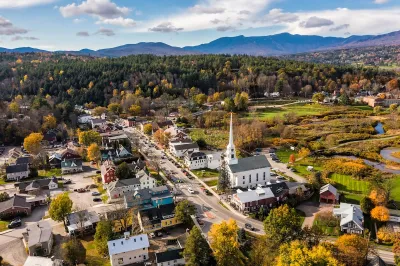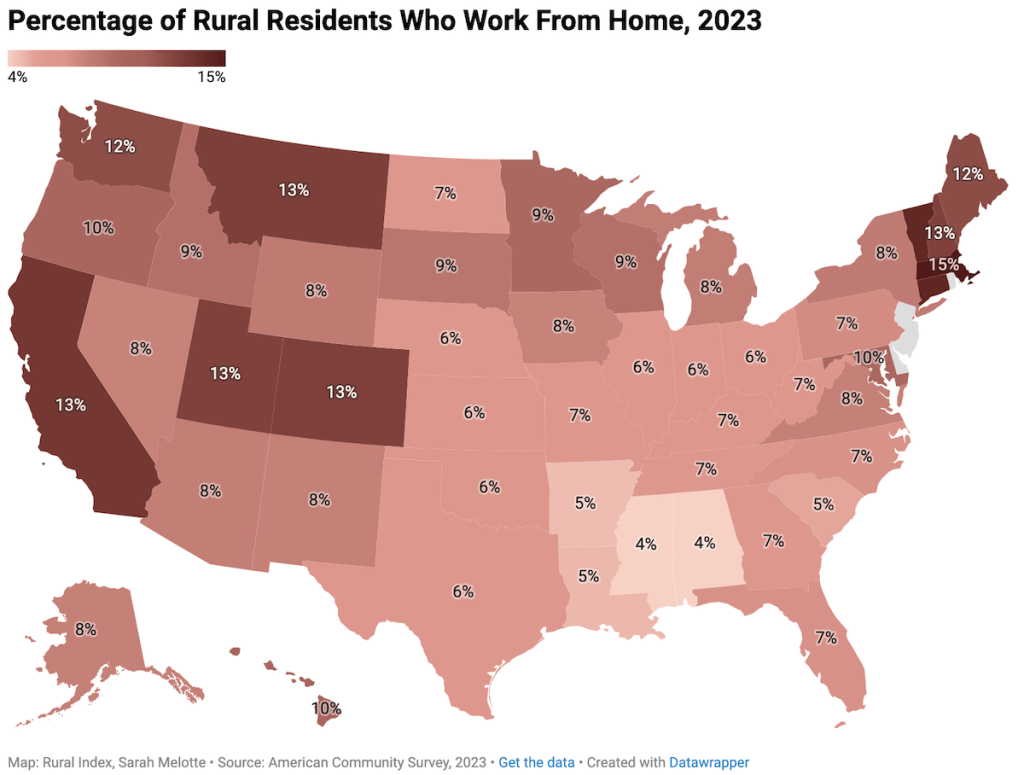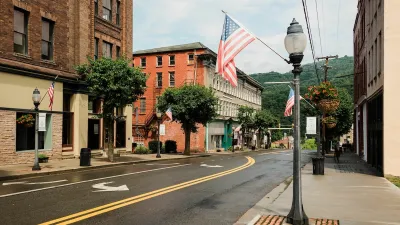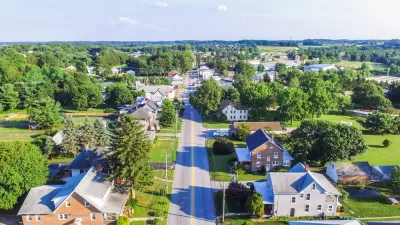Remote workers flock to ski towns, hiking spots and other popular recreation hubs.

A new in-depth analysis from The Daily Yonder provides a nuanced glimpse at what is driving remote working trends in rural areas of the United States. Published in their data newsletter Rural Index, the analysis shows that while fewer remote workers live in rural areas of the U.S. than in cities overall, the concentration of rural remote workers varies significantly based on the dominant industry of the region.
Some highlights of the analysis include:
- Metropolitan workers are 75 percent more likely to work from home than rural workers
- In rural counties with recreation economies such as ski hills, hiking trails, boating, and other recreational activities, a greater share of the workforce works remotely
- Recreation-dependant counties have an average 12 percent remote workforce — but in some of these counties remote workers make up over a quarter
- Rural counties with manufacturing- and mining-dependent economies have the fewest remote workers, which make up only 6 percent of the workforce on average
- Western states and New England have the highest percentage of rural remote workers, while Alaska, Hawaii, and the Midwest have the lowest

See the full analysis, including several interactive graphs, at the link below.
FULL STORY: Recreation-Dependent Counties Attract Remote Workers

Planetizen Federal Action Tracker
A weekly monitor of how Trump’s orders and actions are impacting planners and planning in America.

Congressman Proposes Bill to Rename DC Metro “Trump Train”
The Make Autorail Great Again Act would withhold federal funding to the system until the Washington Metropolitan Area Transit Authority (WMATA), rebrands as the Washington Metropolitan Authority for Greater Access (WMAGA).

DARTSpace Platform Streamlines Dallas TOD Application Process
The Dallas transit agency hopes a shorter permitting timeline will boost transit-oriented development around rail stations.

Renters Now Outnumber Homeowners in Over 200 US Suburbs
High housing costs in city centers and the new-found flexibility offered by remote work are pushing more renters to suburban areas.

The Tiny, Adorable $7,000 Car Turning Japan Onto EVs
The single seat Mibot charges from a regular plug in about as much time as an iPad, and is about half the price of an average EV.

Supreme Court Ruling in Pipeline Case Guts Federal Environmental Law
The decision limits the scope of a federal law that mandates extensive environmental impact reviews of energy, infrastructure, and transportation projects.
Urban Design for Planners 1: Software Tools
This six-course series explores essential urban design concepts using open source software and equips planners with the tools they need to participate fully in the urban design process.
Planning for Universal Design
Learn the tools for implementing Universal Design in planning regulations.
Roanoke Valley-Alleghany Regional Commission
City of Mt Shasta
City of Camden Redevelopment Agency
City of Astoria
Transportation Research & Education Center (TREC) at Portland State University
US High Speed Rail Association
City of Camden Redevelopment Agency
Municipality of Princeton (NJ)





























